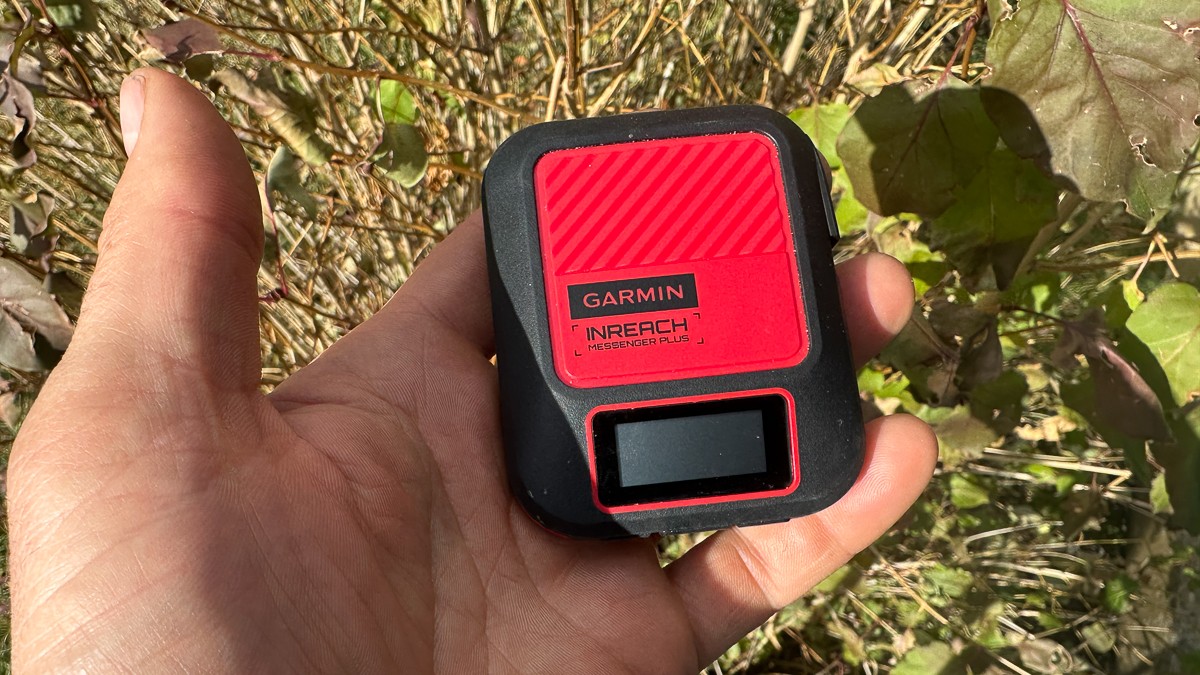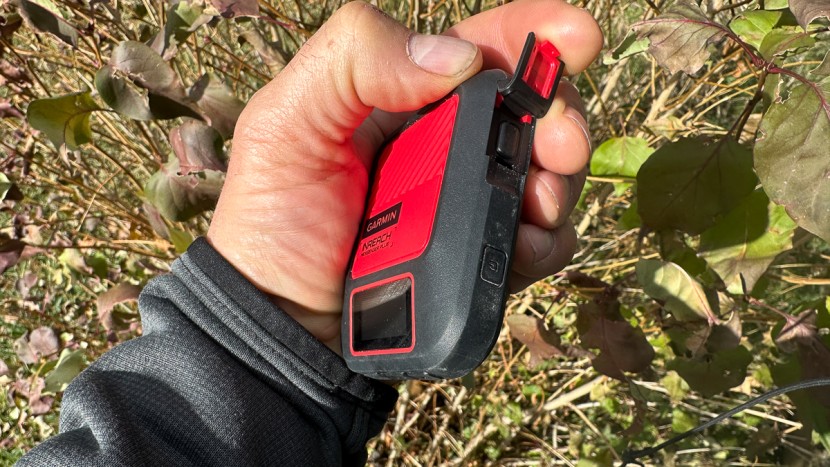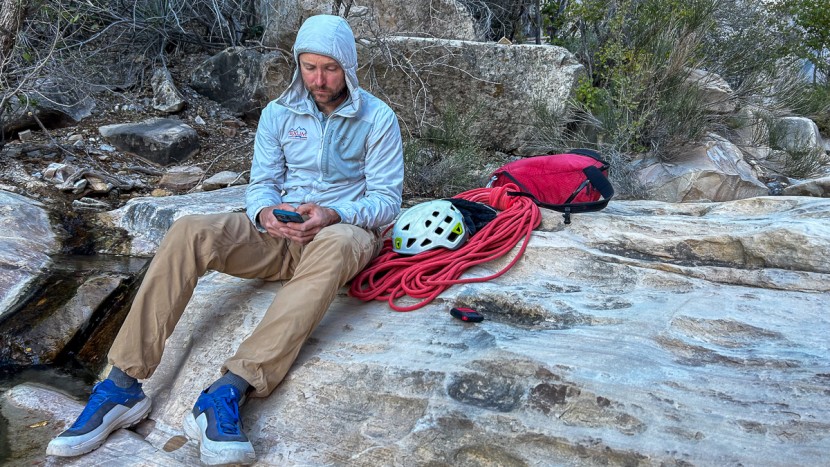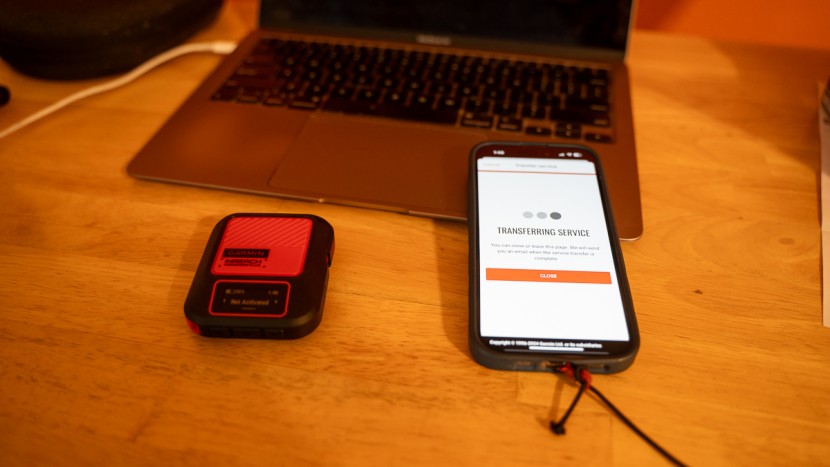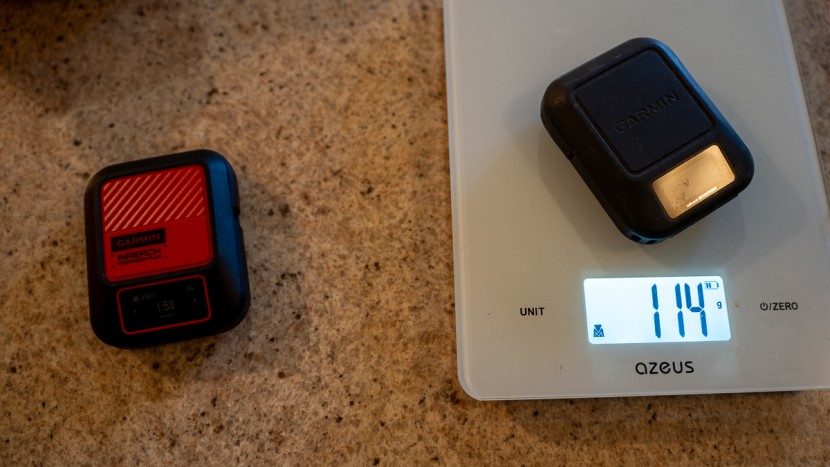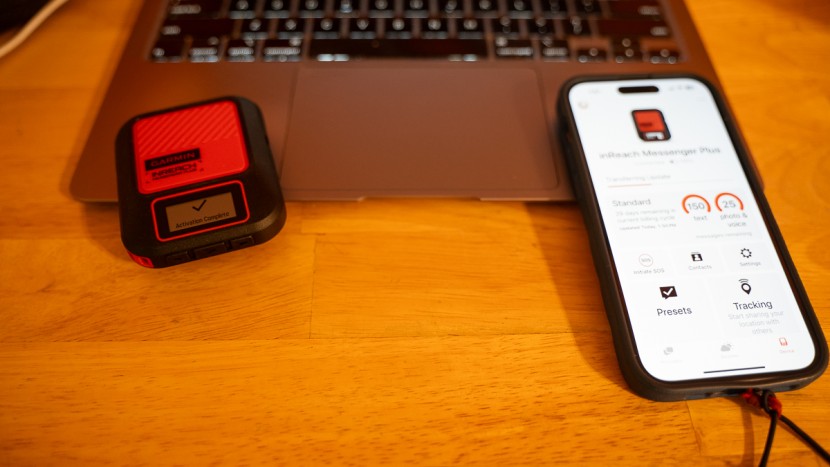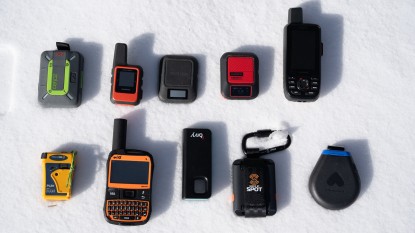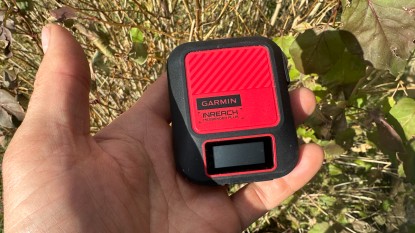
Our Verdict
Our Analysis and Test Results
The inReach Messenger Plus offers all that we've come to expect in wilderness communications and adds more. It uses the best global satellite network, brings excellent battery life, is compact and light to carry, allows for relatively effortless and seamless communication, and now includes the perk of enabling the sharing of photos and short audio clips. To get more functionality at a reasonable price, the best option is Starlink, which is not much more expensive but weighs 15lbs plus a battery and solar panel. Any device that is lighter or less expensive than the Messenger Plus generally sacrifices battery life, signal coverage, and ease of use.
SOS/Emergency Messaging
Garmin follows a proven formula for emergency messaging. You activate the SOS mode, sending that message via satellite network communications. A dispatch center processes your request, and that dispatch center activates local, on-the-ground resources. When comparing different devices and services, the main variables are the interface (do you get a basic SOS message, or can you text further elaboration?) and the satellite network (where is covered?). The different options on the market largely share the dispatch services and on-the-ground response. Garmin inReach Messenger Plus uses the truly global Iridium network. Only a government-supported satellite network like COSPAS-SARSAT matches the coverage of the Iridium network.
Regarding sharing elaborated information with responders, Messenger Plus allows for texting directly with the dispatch service. This is great and should be considered a new minimum standard for responsible emergency comms. It gets you a better on-the-ground emergency response service and gives you confidence in the nature and timeline of that response. At this point, dispatch services will not likely use the voice memo or photo-sharing function of Messenger Plus. However, in an emergency, you can send more nuanced information via photo or voice to a trusted contact in civilization who can then relay that to responders. This “off-label” use is apt to help only in specific circumstances. But, in those rare instances, it could further enhance the emergency response you get. Your trusted contact will have to do some legwork to get that photo, voice memo, or information contained therein to the dispatch service or on-the-ground resources managing your emergency.
Non-Emergency Messaging
The Garmin inReach Messenger Plus leads the field regarding non-emergency messaging. You can text both ways, readily with people out in civilization. You can send and receive photos and 30-second voice recordings. You can do so within one app and without interruptions, in the wilderness via satellite, and in civilization via Wi-Fi and cellular phones. You can compose and view all these messages in a reliable smartphone app. You can even use emojis.
Most of our testing of satellite communicators is while executing routine, non-emergency communications with loved ones in civilization. We have shared thousands of such messages via tested satellite messengers. Our lead tester has a toddler. Thankfully, he mostly raises his kid in person. But he has also spent months in the wilderness during his daughter's first three years. It isn't a stretch to say that this beautiful child has partially been raised by satellite texting. The number of potty training satellite text messages is comical. The inReach Messenger Plus is the best we have used for this sort of routine communication. You can text to other inReach users in the field. You can text or email people who might not know to expect your comms. Messenger Plus communications work best between users of the Garmin Messenger smartphone app. For instance, this is the only way to send and receive photos and voice memos.
Signal Coverage
Signal coverage is a function of three different variables. First, and likely most important, is the nature of the terrain around you when you wish to send or receive satellite messages. All satellite communications are compromised or impossible when terrain, buildings, or thick vegetation obscure the sky. The Garmin inReach Messenger is no different. The other two variables are more under the company's and its service's control. Of these two, the chosen network affects big-picture coverage. Garmin uses the Iridium network for truly global coverage (where legal… there are places on earth covered by satellite signal, but using that signal is illegal)—next, the antenna size in the device matters. A large antenna is more forgiving of carried orientation. The inReach Messenger Plus has a large antenna. You can carry it inside your pack, and as long as it is near the top and the top of the device is roughly facing the sky, it will work as well as you need it to work and as long as the terrain allows. Smaller antennae, like those on some inReach competition, require careful alignment to send and receive messages.
Signal coverage of the inReach Messenger Plus isn't perfect. Still, it is as good as it can get, considering satellite realities and the limitations of the size of electronics that most will carry on their human-powered adventures. To get marginally better coverage, you need to carry a much bigger device within the realities of satellite coverage. You won't do this, partially because it isn't worth it. This is the optimum for now.
Ease of Use
The Garmin inReach Messenger Plus is as easy to use as any other modern electronic device. There is a learning curve; it isn't perfect. You will wish some things were different, but you won't find meaningfully better usage in any other product currently on the market. The ease of use of these devices has come a long way in the last ten years, but improvements still need to be made.
We like the long battery life. As long as you are roughly tuned in to the charge level in your device and have basic backcountry electronics power habits and skills, you will never be left without battery power in the inReach Messenger Plus. The Messenger Plus has two battery-use power modes; in one case, it monitors continuously for incoming messages. In battery-saving mode, it checks for messages every hour. Further, you can charge devices from the inReach Messenger Plus with the right cord. Please don't do this lightly, but it is a good option. In our testing period with this and another Garmin device with the same function, we found a few situations in which this helped us out. Garmin doesn't let you fully drain the Messenger Plus battery this way; you can only charge for 20 minutes before manually restarting, and it won't let you drain it below 25% capacity. All the other functions of the Messenger Plus (setup, tracking options, etc) are standard. You need to learn the proper steps, but it all works out.
Portability
On our calibrated scale, the inReach Messenger Plus weighs 117 grams. That is 4.1 ounces. It is a roughly square, flattened shape. The measured dimensions are 3.1" x 2.5" x 0.9". For all it does, this is very portable. According to our testers, it is a size and weight that can go on all adventures. We don't understand what you are doing if you can't carry this. And we understand all kinds of ultralight, space-conscious pursuits. Our test team foregoes many niceties in their lightweight travels but doesn't leave behind the satellite comms for weight and bulk reasons. You might choose not to carry one of these for some other reason -and that's fine- but space or weight, given the value of this piece of equipment, will not be a valid concern.
Yes, the inReach Messenger Plus is a little heavier and bulkier than the state of the art just a few years ago. The miniaturization of satellite communications might have plateaued. You can still find older Garmin designs that weigh 14% less than the inReach Messenger Plus. But you give up considerably more than 14% battery life and antenna size. The 0.6 ounces of extra bulk in the inReach Messenger Plus gets you meaningful battery life and other significant benefits.
Should you buy the inReach Messenger Plus?
Yes, you should. This is the best product and service currently on the market. It could be slightly better, but not by much. Nothing else available is as functional, reliable, and portable.
What Other Personal Locator Beacon Should You Consider?
First, you'll likely compare this to other Garmin products. The Garmin GPSMap 66i is more than twice the size and weight. Don't bother. The Garmin inReach Mini 2 is slightly less expensive and slightly smaller/lighter but is pickier about antenna orientation, has notably shorter battery life, and you can't send pictures or voice memos. The “no Plus” Garmin inReach Messenger is the same size as the Messenger Plus. It is 3 grams lighter and has slightly better battery life (~10% though, due to the two different battery modes on the Plus, it isn't easy to compare directly). The Messenger Plus allows photo and voice messages that the unqualified Messenger does not.


